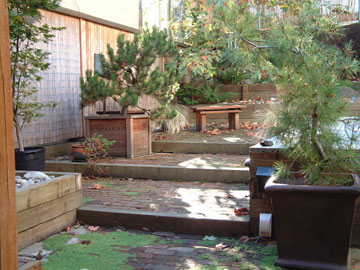
When Chan Buddhism traveled from China to Japan it became known as Zen. Zen Buddhism is characterized by its practical, non-metaphysical inquiry into human experience. Samurai warriors took to the rigors of Zen as a means of improving their performance in battle. The speed, imminence, and lethality of Japanese combat required a kind of defocused concentration that allowed no room for discursive thought. Zen meditation facilitated their ability to see and act without thinking, to let their martial training express itself without hesitation. For the practitioner of Budo the “battlefield” can be seen as the stress, uncertainty, and complexity of modern living. Our ability to move through the day with energy, focus, and clarity is as crucial as practical training in self-defense. It is here that sitting practice and martial practice converge as tools to improve daily life. Training in classical karate requires that we learn to place our attention in areas of body, mind, and environment that differ from our normal mode of experience. To gain leverage we place our attention in the feet and legs. For a lower center of gravity we focus on the abdomen. By means of the protocols of a formal training environment we allow our ego to become malleable in the face of difficulty and challenge. These are but a few of the ways we release our familiar patterns of experience to build a broader platform of awareness. Training in kata and kumite, each requiring slightly different brain functions, create new neural pathways to movement and perception. This enhanced perception and awareness is similarly developed in practical meditation. In the dojo we approach meditation as a stripped down version of Zen. We refer to it as “sitting practice,” which entails placing the body in an erect but relaxed position where the mind is not distracted by physical movement. Quieting the body amplifies the activities of the mind. By staying present in this “static kata” we notice which activities of mind are useful and which tend to destabilize our inner energies and emotions. With time and proper practice we learn to reduce the effect of those influences. Simultaneously a better understanding of how to produce and maintain more positive physical and psychological energy begins to grow. An expanded sense of psychological space precipitates a sense of quietude within activity. This stillness in action is the essence of Zen. It is exactly what the warrior requires on the battlefield—an intense, open concentration that allows intelligence to express itself without fear. This is what we seek in ordinary life—a steady focus, deep concentration, and an energized response to the demands of the day. |